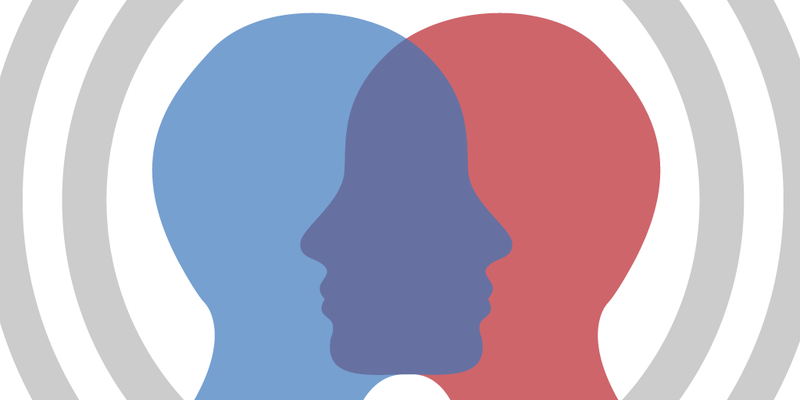The future of customer service is one imbued with empathy. We’ve talked about this trend before. But empathy is one of those words that’s a lot easier to say then it is to practice.
Or, so it seems.
Then again, what do we mean by “empathy”? And how do we bring empathy to the customer service experience?
In this article, we’re going to explore all things empathetic, so you can ensure your customer service meets the bar and excelts at it.
What is Empathy?

Before we can even get started we have to answer the question, “What is empathy?” To put it simply, empathy is putting yourself in the shoes of another person. Yes, it’s cliché, but clichés have a knack for the truth.
So, what is empathy? It’s the act of understanding another person’s experience: relating to another person in a way so that you see the world as they see it.
To put it poetically, novelist Mohsin Hamid offers this definition of empathy: “Empathy is about finding echoes of another person in yourself.”
When a customer is mad that the listed price is not the same when they go to checkout, the empathetic cashier can see the situation from the perspective of the customer. They ask, “How would I feel if I were in their shoes?”
Empathy is a simple and powerful attribute of our minds that often goes unappreciated. It may be at the root of all of our moral leanings.
But what matters for businesses is that... from empathy flows those other valuable attributes of excellent customer service: patience, resolution, and even a sense of humor.
A businesses culture that emphasizes empathy is sure to stand out from the competition.
Empathy for Customer Experience?

Customers want a positive shopping experience, and they have unlimited options to shop to get it. Competition between businesses is fiercer than ever.
What makes businesses stand out is their customer service. In fact, high performing companies are twice as likely to emphasize customer service over low performing companies.
And what’s at the heart of customer service? Empathy.
In fact, Harvard Business Review reports that the “top 10 companies in the Global Empathy Index 2015 increased in value more than twice as much as the bottom 10, and generated 50% more earnings (defined by market capitalization).”
That means empathy training for customer service is paramount.
Customer service representatives can’t always give customers the answers they want to hear. But they can empathize with the customer: understand their concerns and relate to them.
A How-to Guide to Empathy
“Being nice can be an important virtue, but real empathy is something different and deeper,” says Jeff Booth, CEO of BuildDirect.
So far, we’ve talked a bit about empathy and its importance in the abstract. But what does empathy look like in practice? What is it like to shop at a business that understands empathy?
For starters, empathetic employees don’t use negatively charged words like “don’t,” “won’t,” or “can’t.” Because these are words that bring an end to the customer’s issue, whatever they may be.
Instead, empathetic businesses see what their customers want and then strive to deliver it, oftentimes before the customer even knows it.
As Albert Einstein once said, “If I had an hour to solve a problem I’d spend 55 minutes thinking about the problem and 5 minutes thinking about solutions.” This is the mentality businesses need.
When a customer has a serious issue, the empathetic listener goes out of their way to understand, internalize, and then help the customer. Treat customers as you would want to be treated in the same situation.
Verbiage like “appreciate,” and “thank you,” go a long way in showing the customer that you hear them, that they’re people and not just a number that’s part of a daily quota.
Training Your Empathy

By now, we understand what empathy is, why it’s important, and how it appears in the real world. But how can managers and trainers go about instilling their culture with empathy?
Dale Carnegie, in his famous book How to Win Friends and Influence People, writes that empathy starts with this simple statement:
“If I were in your position, I would feel just as you do.”
With this phrase, you ignite the spark in your mind that launches the empathetic mindset. In fact, even using alternate phrasings while speaking with a customer will help employees remain empathetic.
Phrases like...
“I completely agree with you…”
“I understand where you’re coming from…”
“You are absolutely right…”
It’s not always easy. Especially when the adage, “The customer is always right,” is the farthest from the truth.
A Mindful Approach
The trick to nurturing empathy is “mindfulness.” A study by Northeastern University and Massachusetts General Hospital found that eight weeks of mindfulness training produced significant changes in areas of the brain connected to empathy.
While companies can’t provide extensive training they can promote mindful self-reflection. That means examining your emotions in the moment, understanding why you feel that way, and finding the better means to handle the situation.
It’s also a means of gearing our attitude towards empathy.
Starting With a Smile

It may seem silly but building empathy for customers can start simply with a smile.
Just like empathetic words prepare the mind, so too does smiling.
“What’s crazy is that just the physical act of smiling can make a difference in building your immunity.”
It’s not always easy to smile. Especially when work becomes stressful. But, remembering to smile as a tip and trick when the going gets tough can help develop empathetic customer service.
Empathy takes effort. But the rewards are great. It can be trained and developed, but it’s never mastered and requires constant practice.
To further enhance your business, augment it with a queue management system — by subscribing for Qminder. Want to learn empathy? Here are your teaching materials.






